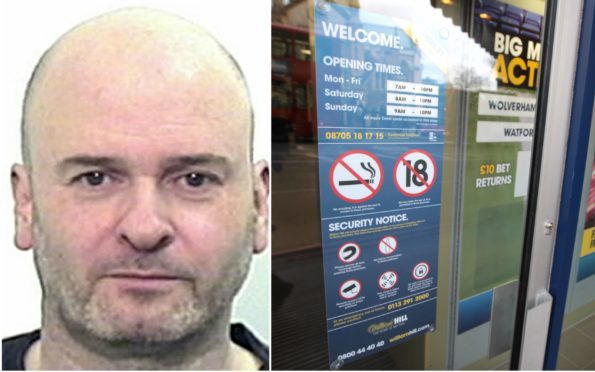Gambling giant William Hill has been fined £6.2 million for failing in its “social responsibility” and tackling money laundering.
The company last year handed Dundee City Council £500,000 after IT fraudster Mark Conway stole more than £1 million from the public purse to fund his online gambling habit.
Despite the massive fine for multiple instances of failing to do so, William Hill insist they are committed to evaluating risk and protecting customers.
William Hill refused to answer any questions put to them by The Courier after a freedom of information investigation revealed them as the company who had paid a “moral obligation” to the council following Conway’s fraud.
The Gambling Commission has now fined the company £6.2 million following its own investigation.
The commission said between November 2014 and August 2016 the bookmaker breached anti-money laundering and social responsibility regulations.
It also found senior management failed to mitigate risks and to have sufficient staff to ensure that processes for adhering to the regulations were effective.
The failures also resulted in 10 customers being allowed to deposit large sums of money linked to criminal offences which saw gains for William Hill of more than £1.2 million.
Conway was only caught in March 2017, following a council investigation.
The Gambling Commission said some of the issues it found included William Hill not adequately seeking information about the source of punters’ funds or establishing whether they were problem gamblers.
Further examples of the bookmaker’s failures include one customer being allowed to deposit £654,000 over nine months without any source fund checks being carried out.
The commission said the customer lived in rented accommodation and was employed within the accounts department of a business and earned around £30,000 a year.
Executive director of the Gambling Commission Neil McArthur said they will use the “full range” of enforcement powers to ensure gambling is fairer and safer.
He said: “This was a systemic failing at William Hill which went on for nearly two years and today’s penalty package – which could exceed £6.2 million – reflects the seriousness of the breaches.”
“Gambling businesses have a responsibility to ensure that they keep crime out of gambling and tackle problem gambling and as part of that they must be constantly curious about where the money they are taking is coming from.”
William Hill confirmed in a statement on its website its online business has “entered into a regulatory settlement with the Gambling Commission” following the identification of a number of cases where “former policies” were insufficient to ensure full regulatory compliance.
William Hill CEO Philip Bowcock said: “William Hill has fully co-operated with the commission throughout this process, introducing new and improved policies and increased levels of resourcing.
“We have also committed to an independent process review and will work to implement any recommendations that emerge from that review.
“We are fully committed to operating a sustainable business that properly identifies risk and better protects customers. We will continue to assist the commission and work with other operators to improve practices in the areas identified.”










